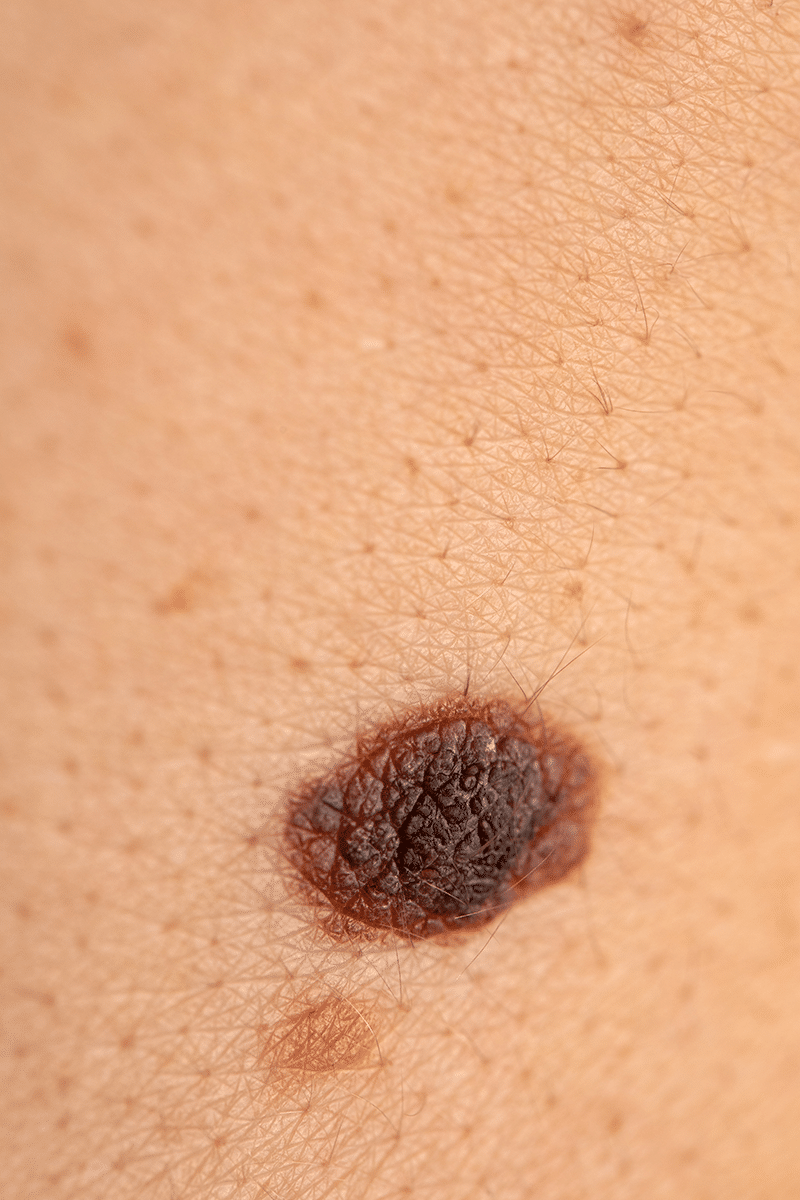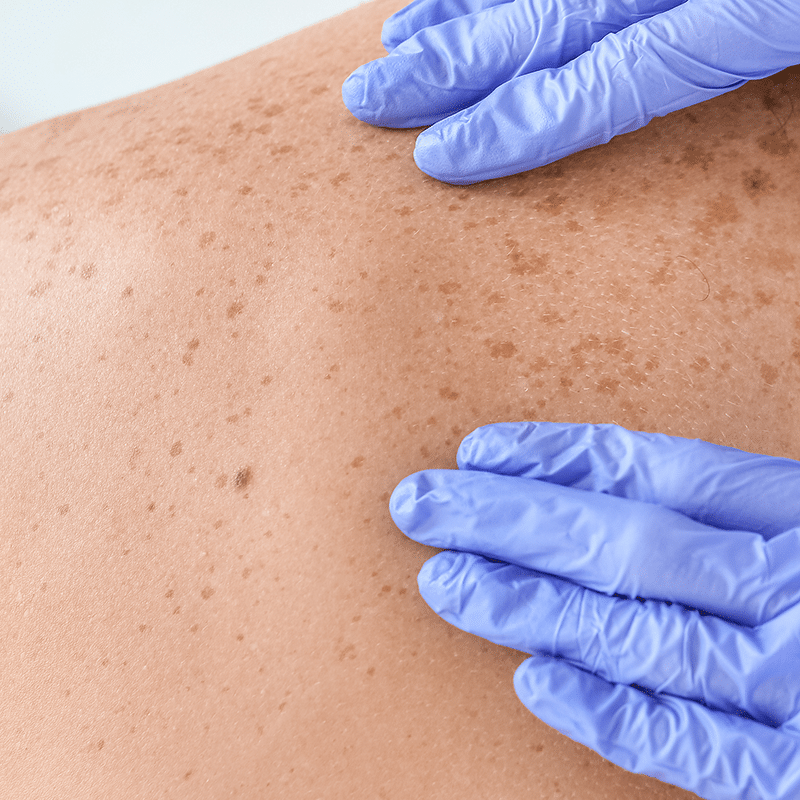Melanoma Skin Cancer Treatment in Lehi, Utah
What is Melanoma Skin Cancer?
Where does Melanoma skin cancer form?
Melanoma Detection
What Are the Warning Signs of Melanoma Skin Cancer?
Melanoma's tactics may be stealthy, but its warning signs are not. Here's what to watch out for:
New and unusual growths
Changes in existing moles
Bleeding or oozing moles

How to treat melanoma skin cancer
Once diagnosed, a range of treatment options awaits:
- Surgery: Excision of the melanoma remains the cornerstone of treatment, ensuring complete removal of the cancer cells.
- Radiation therapy: High-energy radiation targets and destroys the cancer cells, often employed for advanced cases.
- Medications: Targeted drugs and immunotherapies can help control the spread of melanoma in some patients.
- Chemotherapy: In advanced cases, chemotherapy may be used to combat the spread of cancer cells throughout the body.
How to prevent Melanoma Skin Cancer
The 4 types of melanoma
Superficial spreading melanoma
Nodular melanoma
This type grows rapidly and appears as a raised, dark bump on the skin. It may be firm to the touch and can change in size or color quickly.
Mortality Rate:
This type tends to grow rapidly and has a higher risk of spreading to other parts of the body. Early detection is crucial for favorable outcomes.
Fun Fact:
It's often described as a "blueberry muffin" appearance due to its dark color and raised, bumpy surface.
Lentigo maligna melanoma
Acral lentiginous melanoma
Schedule your skin cancer screening today!
Melanoma may cast a long shadow, but by understanding its nature, recognizing its signs, and adopting preventive measures, you can become your own skin's protector. Remember, early detection and timely treatment are key to a positive outcome.
Download our free guide to skin self-exams.
Melanoma FAQ
how long can you have melanoma and not know it?
The answer depends on the type of melanoma and its growth rate.
Some types of melanoma, like lentigo maligna melanoma, can grow slowly over decades without causing noticeable symptoms. However, other types, such as nodular melanoma, can grow rapidly and become detectable within a few weeks









